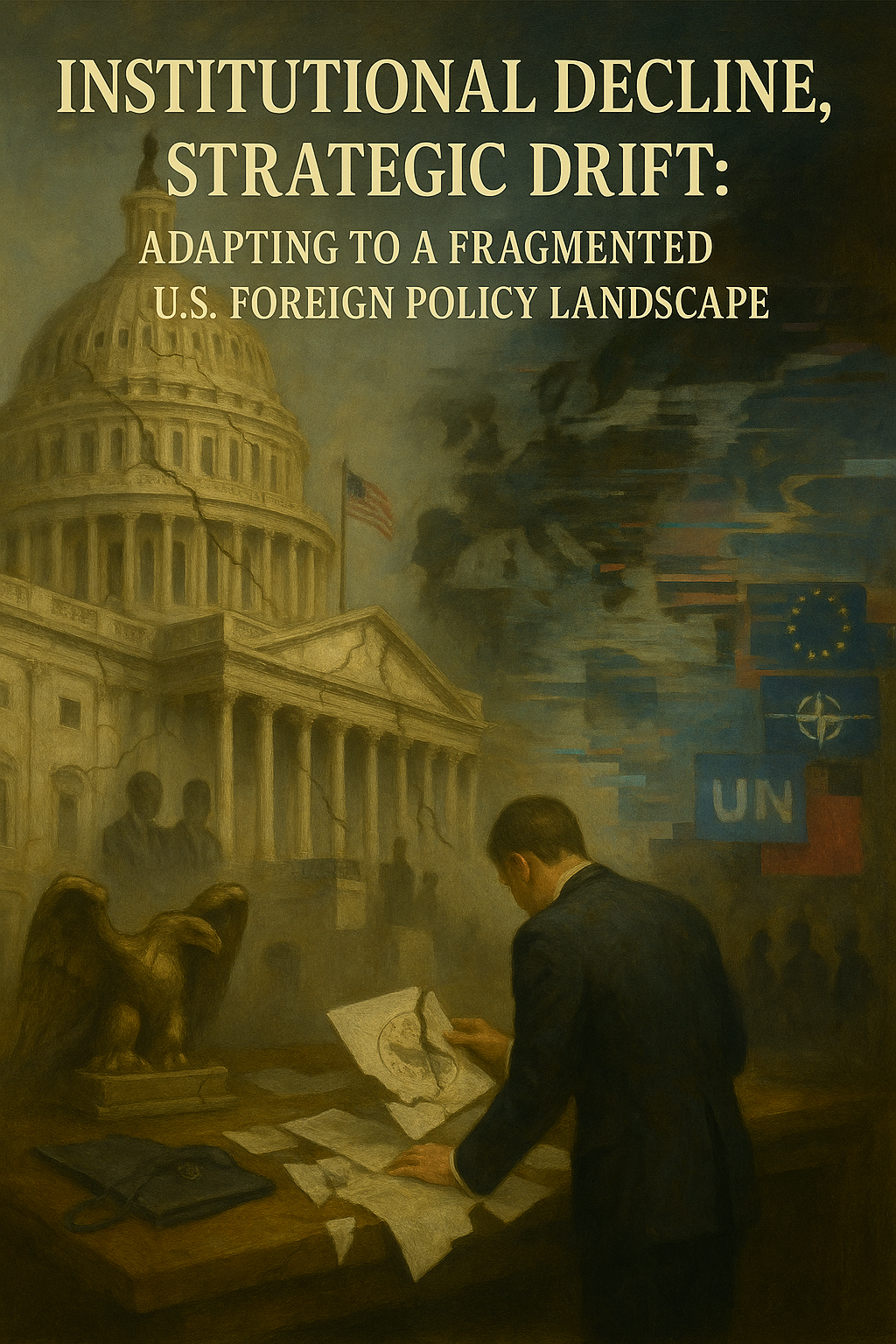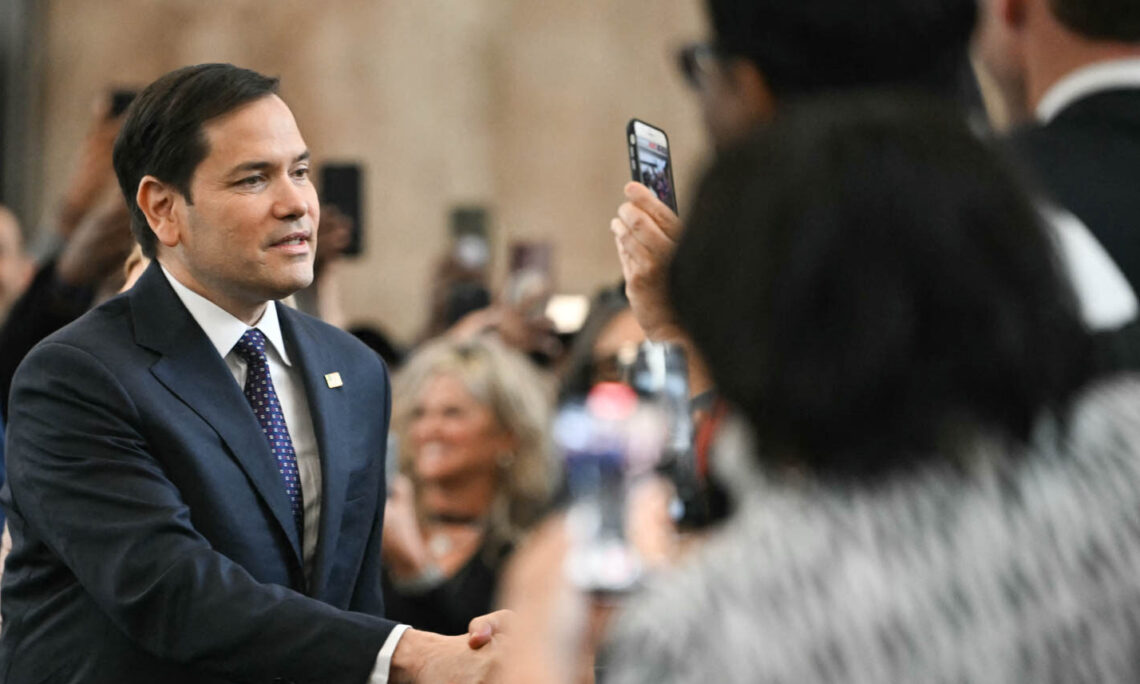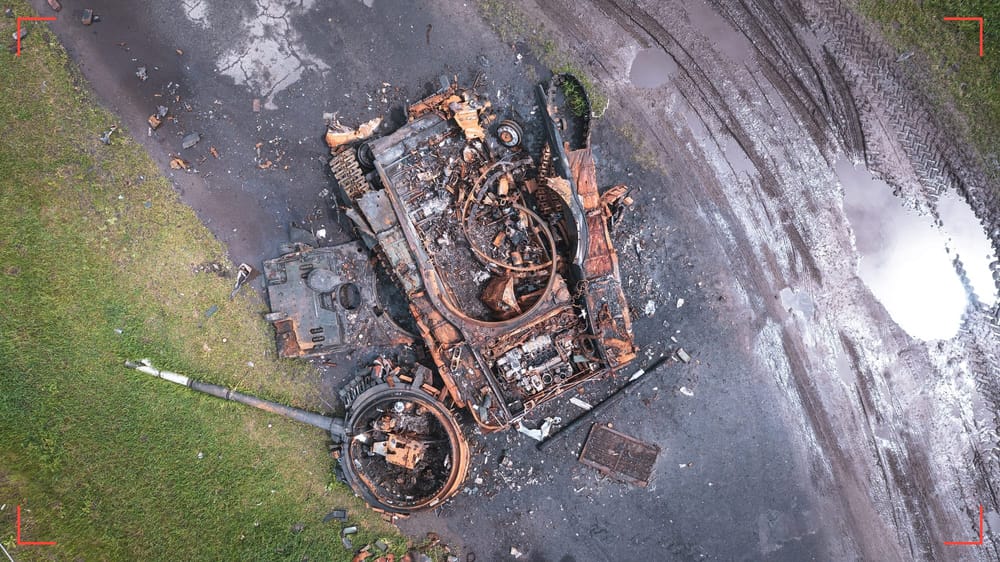Institutional Decline, Strategic Drift: Adapting to a Fragmented U.S. Foreign Policy Landscape
By Dr. Treston Wheat

Introduction
Throughout modern history, the effectiveness of U.S. foreign policy has depended not only on presidential vision, but on the institutional strength and professionalism of its diplomatic and national security apparatus. The State Department and National Security Council, in particular, have served as critical engines for shaping strategy, managing crises, and coordinating global engagement. Since President Trump’s second term, however, both institutions have undergone significant restructuring under the current administration. Large-scale layoffs, role consolidations, and shifts in personnel have introduced new questions about institutional capacity, coherence, and long-term strategic planning. This report examines those changes, focusing on the realignment of leadership, the practice of dual-hatting senior officials, and the implications of reduced staffing, while placing them in historical context. The goal is to critically assess how these developments may influence the United States’ ability to project stability, respond to emerging challenges, and uphold its global commitments.
Layoffs and Structural Changes
Under the leadership of Secretary of State Rubio, the U.S. Department of State has undergone a dramatic and controversial reorganization that has weakened its diplomatic capacity at a time of escalating global crises. Approximately 1,300–1,350 employees—around 15–18% of the department’s domestic workforce—have been dismissed. These cuts disproportionately targeted personnel responsible for critical functions such as intelligence, energy diplomacy, visa processing, and strategic engagement with countries like China, Russia, and those in Eastern Europe. While the administration framed the move as an effort to streamline operations and boost efficiency, career diplomats and foreign policy experts have criticized the layoffs as politically motivated and strategically reckless. The loss of institutional knowledge and the hollowing out of functional expertise have left the State Department ill-equipped to address international challenges, such as cyber diplomacy.
The restructuring effort was driven largely by a team of young political appointees aligned with the “America First” agenda, prioritizing ideological loyalty over foreign policy experience. Many of the eliminated positions were in areas that Rubio himself had previously designated as high priority, compounding the perception of incoherence in U.S. foreign policy. The process has also raised legal and constitutional concerns. Abrupt dismissals followed a recent Supreme Court ruling that removed job protections for many federal employees, and implementation was marred by administrative confusion, unclear protocols, and sudden furloughs. These conditions further damaged morale and left remaining staff uncertain about the department’s future direction. As one veteran employee put it, “There’s no one left to do what we were doing.”

The human impact of these decisions is exemplified by the story of John Dinkelman, a 37-year Foreign Service veteran and the recently elected head of the American Foreign Service Association, who was laid off with just six hours' notice. In a widely publicized interview, Dinkelman described the dismissals not merely as a blow to individuals, but as a strategic error that undermines America’s ability to manage complex global crises. He rebuffed the administration’s claim that career diplomats are disloyal, arguing instead that these professionals have long served administrations of all political stripes with integrity and dedication. Dinkelman warned that slashing the professional corps of the State Department during simultaneous crises in Ukraine, the Middle East, and the Indo-Pacific could gravely weaken U.S. influence abroad.
The Issue of Dual Hatting
Compounding these personnel challenges is the administration’s extensive reliance on “dual-hatting”—the practice of assigning multiple high-level government roles to a single individual. Rubio himself serves simultaneously as Secretary of State, National Security Advisor, head of the U.S. Agency for International Development (USAID), and even acting Archivist of the United States. Other senior officials, such as Russ Vought and Todd Blanche, also occupy two or more top positions. While legal under the Federal Vacancies Reform Act of 1998, this unprecedented consolidation of responsibilities raises serious managerial concerns. Scholars, lawmakers, and government oversight groups warn that no individual can effectively manage multiple demanding roles, and that this concentration of power risks bottlenecks, conflicts of interest, and an erosion of checks and balances. As Yale’s Jeffrey Sonnenfeld noted, the administration increasingly resembles “a confused startup operation.”

This dysfunction is mirrored within the National Security Council (NSC), which has been gutted and reshaped into a vehicle for rapidly enacting President Trump’s directives rather than facilitating interagency coordination. The NSC’s role as a strategic planning body has withered amid political purges and mass resignations, leaving key national security initiatives uncoordinated and vulnerable to bureaucratic fragmentation. Key responsibilities have been redistributed to the State and Defense Departments, further stretching already overburdened personnel. The Council’s handling of Ukraine aid has drawn particular criticism, with reports of miscommunication, delay, and unclear messaging—all indicative of a deeper institutional breakdown.
Rubio’s own performance on the world stage reflects the consequences of this disarray. His first official visit to the Indo-Pacific was sharply criticized for its lack of focus and deliverables. Originally intended as a multi-stop tour to reaffirm ties with key allies like Japan and South Korea, the trip was truncated to a brief stop in Malaysia due to his overlapping roles. While in Kuala Lumpur, Rubio signed a civil nuclear cooperation agreement but failed to publicly address pressing regional concerns such as tariffs, China, and Hamas. His remarks at the ASEAN foreign ministers’ meeting were vague, and he sent mixed messages about the U.S. commitment to the region, undermining confidence among Southeast Asian leaders. The situation was further complicated by simultaneous meetings with Chinese and Russian officials, controversial ambassadorial nominations, and reports that Rubio had dismissed his ASEAN preparation team. These missteps reinforced the perception that the United States is no longer a serious diplomatic actor in Asia.
Taken together, these developments paint a troubling portrait of the current state of U.S. foreign policy and national security infrastructure. The deliberate weakening of diplomatic institutions, the concentration of power in a handful of political loyalists, and the breakdown of interagency coordination threaten to undermine America’s global leadership at a moment of rising international volatility. Whether the administration’s stated goal of efficiency can overcome the deep institutional damage remains to be seen, but critics argue that the costs to U.S. credibility, capacity, and security will likely be profound.
Implications of Bureaucratic Changes
The current state of dysfunction within the U.S. State Department and National Security Council poses serious threats to American foreign policy effectiveness and crisis management capacity. Historically, similar breakdowns in bureaucratic competence and interagency coordination have had lasting and dangerous consequences. The present situation risks repeating those mistakes, undermining America’s credibility abroad, weakening alliance networks, and leaving adversaries emboldened.
The sweeping layoffs of over 1,300 State Department personnel under Secretary Rubio are likely to strip the department of institutional memory, technical expertise, and critical regional knowledge. A strong historical parallel to today's erosion of institutional knowledge at the State Department and National Security Council is found in the “China Hands” purge during the Second Red Scare. In the late 1940s and early 1950s, U.S. diplomats with deep expertise on China, many of whom had shaped wartime partnerships and postwar policies, were systematically removed from government under accusations of Communist sympathies by congressional committees led by McCarthy and McCarran. This campaign destroyed the careers of seasoned Foreign Service Officers like John Service and Owen Lattimore and effectively dismantled the State Department’s institutional memory on East Asia.
Similarly, the decimation of the NSC during Trump’s second term recalls the dysfunction of the Vietnam-era NSC under President Lyndon Johnson, when the council was largely bypassed in favor of informal channels. Johnson relied heavily on Secretary of Defense Robert McNamara and his Tuesday lunch group, marginalizing the NSC’s coordinating role. The result was fragmented decision-making, groupthink, and a failure to adequately assess the deteriorating conditions in Southeast Asia. As with Vietnam, today's weakened NSC appears unable to integrate economic, security, and diplomatic elements of foreign policy, especially amid escalating crises like the war in Ukraine, tensions in the Taiwan Strait, and nuclear brinkmanship in Iran.
The dual-hatting of Marco Rubio as Secretary of State, National Security Advisor, head of USAID, and acting U.S. Archivist centralizes vast power in one individual, replicating a structure seen in moments of past failure. During the Iraq War under President George W. Bush, the National Security Council lost much of its traditional coordinating authority, as power was funneled through Vice President Dick Cheney’s office and the Department of Defense under Donald Rumsfeld. The absence of rigorous interagency process contributed to catastrophic intelligence failures, lack of post-war planning, and long-term damage to U.S. strategic credibility.
By combining roles and stripping departments of functional autonomy, the Trump administration risks a similar collapse of deliberative capacity. The NSC's reported failure to coordinate Ukraine aid, characterized by erratic communications and contradictory policies, is a case in point. It mirrors the 1980 Iran hostage crisis, during which poor coordination led to the disastrous Operation Eagle Claw. Then, too, a lack of coherent interagency planning exposed the limits of ad hoc leadership models and weakened global perceptions of American competence.
One of the greatest costs of the current dysfunction is the erosion of trust among allies. Rubio’s truncated visit to the Indo-Pacific and failure to provide clear, consistent messaging at ASEAN reaffirm regional suspicions that the U.S. is no longer a reliable partner. This recalls the period immediately following the Watergate scandal, when allies questioned the stability of U.S. leadership. President Gerald Ford’s foreign policy was hampered by perceptions that the U.S. was consumed by domestic turmoil, contributing to a weakening of NATO’s cohesion and growing assertiveness from the Soviet Union in Africa and Asia.
Moreover, historical studies of alliance politics show that allies care as much about reliability as they do about capability. With America’s top diplomats overburdened, ambassadorial posts politicized, and the NSC hollowed out, the signal to both allies and adversaries is clear: U.S. foreign policy is erratic and transactional. This encourages hedging behavior, particularly among swing states like Malaysia, Indonesia, Turkey, and India, which may increasingly turn to China or regional pacts to manage their security and economic futures.
Periods of internal dysfunction in U.S. foreign policymaking historically open strategic windows for adversaries. The late 1970s, marked by infighting in the Carter administration and the resignation of key foreign policy figures, saw both the Soviet invasion of Afghanistan and the fall of the Shah in Iran. Similarly, current breakdowns may embolden powers like China and Russia. If the U.S. cannot coordinate policy across agencies or deliver consistent diplomatic engagement, rivals are more likely to test red lines through grey zone operations, cyber attacks, and disinformation. The demoralization of U.S. diplomats and sidelining of experienced staff also inhibits the early-warning and negotiation functions that are critical to crisis prevention. Scholars like Alexander George have long emphasized the importance of “pre-crisis management,” which depends on deep local knowledge and interagency networks, both now severely degraded. Without those capabilities, the U.S. risks not just poor response, but policy paralysis in the face of sudden shocks.
Risks for Multinational Organizations
The transformation of America’s foreign policy institutions is more than a matter of internal government reorganization because it signals a shift in how the United States perceives, prioritizes, and projects power in the world. While reform is inevitable in any democratic system, the recent pattern of institutional downsizing, dual-hatting of senior officials, and erosion of diplomatic expertise at the State Department and National Security Council introduces significant risks. History offers clear warnings: from the dismantling of China expertise during the McCarthy era to the interagency confusion following the post-9/11 intelligence reorganization, weakening core diplomatic and strategic institutions has often led to missteps, slower crisis response, and the loss of long-term strategic foresight.
These developments will have tangible implications for multinational corporations, NGOs, and other international actors that rely on stable U.S. foreign policy and competent diplomatic channels to navigate complex environments. As institutional knowledge becomes thinner and U.S. engagement grows more erratic or politicized, the burden of risk forecasting increasingly shifts to the private and non-profit sectors. Companies with overseas operations and supply chains will find it harder to anticipate regulatory shifts, trade policy changes, or regional instability if U.S. policy signals are unclear or delayed. NGOs operating in fragile states will likely find diplomatic backchannels less responsive, conflict de-escalation mechanisms slower, and funding or visa pathways more difficult to secure.
In this context, geopolitical risk assessment must become more autonomous, agile, and attuned to the evolving character of American statecraft. Companies and NGOs can no longer assume that traditional alliances or predictable policy continuity will hold. Instead, they must invest in horizon-scanning capabilities, diversify sources of geopolitical intelligence, and build relationships beyond Washington, relying on those capable of doing this work for them. The capacity to interpret strategic ambiguity, detect shifting power centers, and adapt to the growing fragmentation of global governance is now a core requirement for resilience for the foreseeable future.
Stay Ahead with RileySENTINEL
Ensure your organization is equipped with the latest intelligence to navigate complex and high-risk environments. Subscribe today and gain exclusive access to our comprehensive archive, expert analysis, and timely reports that empower you to make informed decisions with confidence.
Unlock the Full Potential of RileySENTINEL
- Stay informed with real-time security updates tailored to your region and needs.
- Gain access to a personalized library of geopolitical and security insights.
- Receive forward-looking analysis to stay one step ahead of emerging risks.
Join a Community of Global Decision-Makers
Our reporting is shaped by professionals in NGOs, international development, and commercial sectors, ensuring our content is relevant and actionable. Subscribe now and keep your organization secure in an ever-changing world.
[Subscribe Now] to RileySENTINEL and access the intelligence you need to protect your people, assets, and operations.
Expert Analysis On-Demand: Request Support
Leverage RileySENTINEL's expert team for deeper analysis and tailored insights:
- On-demand consultations with our global network of advisors
- Custom reports focused on your specific operational contexts
- Proactive risk mitigation strategies for volatile environments
- In-depth analysis of regional stability factors and future outlooks
- Expedited response options for time-sensitive inquiries
Click this link to be redirected to the support request page.
RileySENTINEL: Global Insights. Local Expertise.






